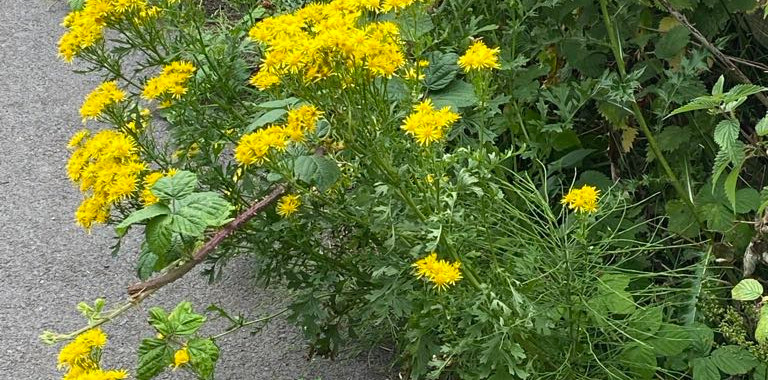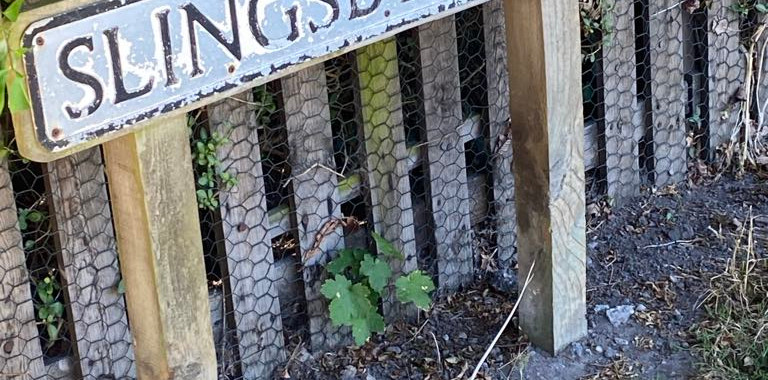The Stray, Harrogate, North Yorkshire
- Art - Culture - Tourism
- Jul 30
- 5 min read
Updated: Aug 5

By Marysia Zipser
30 July 2025
Nottingham
Photography by Marysia Zipser
Please click on photographs to enlarge.
Setting the scene. It was 19 years ago when I last visited Harrogate for a two night stay and during the days I toured three Robert Adam (1728-1792) interiors at historic Nostell Priory, Harewood House and Newby Hall, led by Gail Bent interior designer and lecturer. It was an illuminating learning experience and one I won’t forget. Historic houses, towns and parklands always inspire me.
Early July I revisited the town staying in a house, for nine days, overlooking The Stray. Missing my gym sessions during mornings back in Beeston-Nottingham, I easily slipped into a daily routine of walking for an hour or more every morning on the Stray. With walkers, runners, and dogs passing me along Slingsby Walk and across the grassland by and in between the majestic trees lining the pathways, it became relaxing and reflective, and yes, addictive in a lovely way. Like watching a moving picture show, occasionally stopping to sit down on a park bench or standing still just to breathe in, and contemplate the scenes around me and make up character stories in my head about the walkers and their dogs.
A little bit of history and background of Harrogate. Harrogate is a town which has promoted health and fitness over the last few centuries. It’s well known for its history as a fashionable spa town. In the 14th century Harrogate consisted of just a few cottages located within the Royal Forest of Knaresborough, with its people making their living through agriculture, forestry and weaving. Knaresborough had an established community around its medieval castle and church. The Royal Forest had passed into the hands of John of Gaunt, Duke of Lancaster, in 1369. The forest remained in the hands of the Duchy of Lancaster, which still owns the freehold of the Stray.
And then in 1571 William Slingsby discovered the Tewit Well and recognised the medicinal powers of the waters. And what followed was the development of Harrogate taking a new direction. The knowledge of the well began to spread and physicians identified further springs including St John’s Well, the chalybeate springs and the Old Sulphur Well, now in the Royal Pump Room Museum. Visitor numbers increased at a steady rate from the 1660s through the Georgian period and Queen Victoria’s reign. More spa buildings were built to meet demand and of course accommodation and hotel buildings. The railways brought loads more visitors to this fashionable spa town and to enjoy other aspects of the society with its daily and evening entertainment. The railway meant that the wealthy could live in Harrogate and commute to their work in the industrial towns of West Yorkshire, such as Leeds or Bradford, on a weekly or daily basis.
The town has evolved to become a major conference and events destination. The Harrogate Convention Centre, which opened in 1982, hosts a variety of events, including conferences, exhibitions, and concerts. Its famous Turkish Baths (built 1897) still remain and are open for treatments and therapies.
More about The Stray. The Stray is 200 acres of grassland, once part of the Forest of Knaresborough, which surrounds the centre of Harrogate. Because of its importance to the spa it is protected for use by the public by an Act of Parliament of 1778. This stated that the 200 acres should “forever remain open and unenclosed and all persons whomsoever shall and may have free access at all times to the said springs and be at liberty to use and drink the waters there arising”.
The original Forest Award allotted grazing rights (or "gates") on the unenclosed land, so that animals on the 200 acres were free to stray without tether, giving rise to the popular name for the land, the Stray (a term used elsewhere in Yorkshire for unenclosed land, such as at York and Redcar).
The original forest award has been changed over the years, but the idea of providing 200 acres “open and unenclosed" has survived despite many attempts at encroachment. The most famous of these was in 1933 when the council planted flowerbeds on West Park Stray. These were resented so much that the Stray Defence Association was founded. In the following year, when the council planned a further 5,000 square yards, Stray Defence candidates stood at the local elections - and won. As a result of this victory, the flowerbeds were removed from the Stray and wartime emergencies allowed further changes. Trenches were dug in 1938 in fear that German planes might use the open land as a runway and much of the land was ploughed up to grow crops during World War Two.
Over the years the Stray has been used for various sporting and leisure activities.Oxen were roasted to celebrate the Golden and Jubilees of Queen Victoria and also in 1902 to celebrate the end of the Boer War. Other activities to take place on the Stray have included balloon ascents, air races, horse racing, donkey riding, cycling, circuses and fairs.
I hope my photographs of the Stray will provide you with enough evidence of this beautiful place to tempt you to visit too. I’ve included shots of several covered wells on which are explanatory iron plaques.
Further attractions. The town centre you can walk to easily where there are a multitude of places to visit and experience to add to your history, health, beauty, nature, gardens, art, cultural, and food and drink appetites. Not forgetting the famous and original Betty’s on Parliament Street, with a fascinating 100 year old history.
I would like to suggest you visit first the very interesting Royal Pump Room (The Harrogate Museum) which charges just £4 for adults and £3 for children aged 5-16, disabled visitors, senior citizens, and students. Their free brochure provided much reference to this blog. Managed by North Yorkshire Council which also manages the Mercer Art Gallery, Knaresborough Castle and Courthouse Museum and Skipton Town Hall.
My next North Yorkshire blog will feature Knaresborough and its breathtaking views along the River Nidd and upwards, and from the medieval castle ruins and park high above looking across and downwards.
With gracious thanks to my dear friend who was a valued host and guide during my Harrogate stay.
Marysia Zipser
Founder & ACT Ambassador
E:mail : marysia@artculturetourism.co.uk
“Harrogate is the queerest place with the strangest people in it, leading the oddest lives of dancing, newspaper reading and dining.” ~ Charles Dickens in 1858 after visiting Harrogate on a lecture tour.
Please feel free to share this article blog via social media icon links and/or write any comments or questions in the Comment Box below. Thank you.
Links:
https://visitnorthyorkshire.com/index/mercer-art-gallery their current art exhibition, entitled H.A.P.P.Y., by international artist Liz West, is stunning, so do visit and take your children too. It runs until 5 October.
https://www.h2kbotanicals.com/ Montpellier Parade
https://oldesweetshop.co.uk/ & gifts, Montpellier Parade





























































































Comments